These days, we tend to neglect and/or not focus enough on the value proposition. 🙄
🧠 We don’t realize that, for one product, there can be dozens of different value propositions. And, therefore, dozens of ways to meet a need and talk about it. 📣
Yet it’s of strategic importance to your business model and the success of your company… 🏆 You’ll learn how to attract and retain customers, and how to develop a healthy, sustainable business. 🌱
The earlier this framework is done, in the life of the company, the more value it will have. 💎 Once you’ve found the winning value prop, you can identify audiences, acquisition channels, positioning statement… 👀
- Value proposition definition.
- How to build a unique value proposition.
- Our top tips on the value proposition.
- Example and case study: Welcome to the Jungle 🌴
You can see why, we’ll cover the subject in this article 😉 On the program ⬇️ :
Soon, you’ll be ready not only to understand and define your unique selling proposition… But also to illustrate it, embody it, and guarantee that it becomes reality. 🔮
Value Proposition Definition
The value proposition is a central concept in business and marketing strategy, determining what sets a product or service apart in the marketplace. 💫
In practical terms, this term evokes both what and how customers are offered, but also why they should prefer its offerings to those of its competitors. 🎁
💎 The value proposition must therefore highlight the unique benefit and specific solution provided to meet customers’ needs or solve their problems.
👉🏼 There is a 3-pronged value proposition framework on which to build:
- Product/service attributes 🌟 i.e. the distinctive features and specific functionalities that define the offering (e.g. quality, performance, design, ease of use…) and add value in the eyes of consumers.
- Customer focus 🧭: the proposition must be aligned with the specific needs, expectations, preferences and desires of the target audience… each segment must be understood in depth to formulate an offer that resonates and captivates.
- 🤩 Expected benefits (functional, emotional or social): this is what customers can get from choosing your offer.
In short, the value prop helps you stand out from the competition by captivating and retaining potential customers with distinctive, relevant offerings. 💥
🏛️ This is really the pillar on which the positioning strategy rests, playing a key role in commercial success and the ability to respond to changing consumer needs.
As a reminder, there can be several unique value prop for a single company.
8 Easy Steps To Build Your Value Proposition
🔍 Here are the steps we recommend you follow to find and build your👷🏻 value proposition canvas model.

1. Understanding The Market & Customers
Analyze the market and identify trends, unmet needs and consumer expectations. 🧐 You can do this through market research/studies, case studies, data analysis and customer value proposition feedbacks.📚
With this, you can ⬇️ :
- 👤 Define the ideal customer (or buyer persona) and find the problem(s) and pain points the offer addresses.
- 🎯 Segment the target audience: divide your target market into distinct segments based on criteria (demographics, buying behavior, specific needs, etc.).
2. Assessing The Competition
During your market analysis, you will obviously have identified your main competitors (with a benchmark). ⚡️ It’s a question of focusing on them and :
- Study proposals from direct and indirect competitors.
- Identify their strengths and weaknesses in relation to your own offers.
- But also, the acquisition and/or communication channels they use.
- Look for gaps or untapped opportunities that you could fill with your proposal. 🫵🏼
- All you need to do is to have a real differentiation from the competition!
3. Clarify Competitive Advantages
As you can see, the value proposition must highlight your competitive advantage(s), what sets you apart in the marketplace. 💎
🏆 They most often lie in the unique attributes of your product or service: technology, quality, price, customer service, sustainability, etc.
They can also come from the specific needs of your customers. 💭 Then think about your marketing, what makes your solution better, or different, from others. 🤔
4. Define Key Customer Benefits
👀 Identify the main benefits your customers can expect from your product or service (e.g. cost savings, productivity gains, improved user experience, etc.).
You will need to think about and differentiate the different types of benefits simultaneously 👇🏼 :
- Functional (what the product does),
- Emotional (how it makes customers feel),
- Social (the value and status it gives them).
⚠️ Beware, it’s best to have different ones for different offers, products and/or types of customers.
5. Write Your Unique Value Proposition
Use the information gained from your research to formulate a concise and unique ✍🏼 offer that clearly explains what you do, for whom, and why it’s valuable. 🌟
Pay particular attention to the slogan and the main headline of your statement. 😉
Next, make sure to have a clear, memorable and compelling value proposition, capable of instantly capturing the attention of your potential customers.🤩
🚨 To create an effective value proposition, you’ll need to go further than simply describing the solution, you’ll need to succeed in telling a compelling story (storytelling) about why your proposition is so unique and exceptional.
Don’t hesitate to enlist the help of writing frameworks and/or masters of the pen for this step 🪶 (especially if you plan to present your project to investors).
6. Validate Your Unique Value Proposition (internally)
Unusual, isn’t it? 😉 Yet validating your proposal internally is crucial for :
- Get constructive feedback 🏗️,
- Refine your message before presenting it to the public, and make sure it’s clear/convincing,
- Be aligned with your team’s expectations and possibilities (in-house skills, techniques used, workload, etc). 🤝
💡 This is a must if you’re planning to launch a startup, company, service, product, etc. that includes multiple teams and/or execution/decision levels. 👩🏻⚖️
7. Test & Iterate (externally)
Test your message(s) and/or proposal(s) with potential customers, whether through interviews, surveys or market tests. 📋
We advise you to carry out your surveys on small, carefully selected samples. After all, it’s this “go market fit” stage that will enable you to learn the most and generate the most results.
This step will enable you to match different value propositions to different targets/channels, and identify those that should be eliminated, those that are proving very buoyant, those that need to be dug into, etc. ❌
🗣️ Then use the feedbacks and data collected to adjust and improve your value proposition until it meets (to a satisfactory level) customers’ needs and expectations. 🔄
Once you’ve done that, once you’ve found the right message and/or the right proposition for the right audience… ✅ Then you can think about how to attract and generate traffic, and the channels you’ll use to reach them.
If nothing works, again, let it go. ❌
8. Integration & Distribution
Make sure your value proposition is aligned with your overall strategy, including your branding, market positioning and communication. 💫
💡 In fact, it’s a good idea to think about these different elements as soon as the idea emerges. And :
- If it doesn’t fit, it’s best to drop the idea.
- If you absolutely must go down this road, you’ll need to change/adapt all the existing elements (mentioned above). 👆🏼
Finally, communicate consistently and omnichannel, across all channels where your customers are, to reinforce brand value proposition recognition and engagement. 💪🏼
Here’s the reasoning behind finding the right acquisition channels to exploit:
👉🏼 Is this a B2C or B2B target?
👉🏼 What channels does your competition use?
👉🏼 What are you most comfortable acting on quickly (in-house skills), or least resource-intensive?
➡️ By following this value proposition canvas model steps, you can build a unique, relevant and strong value proposition that differentiates you in the market, attracts and retains your customers, and contributes to sustainable growth. 🚀
Top 5 Value Proposition Tips
Building an effective value proposition is key to positioning your product or service competitively in the marketplace. 💥
✊🏼 Once you’ve found your winning proposition, you’ll need to do everything you can to work towards it, to match and fully embody it (positioning statement, brand image, data, etc.).
Here are our top tips on how to get there. ⬇️
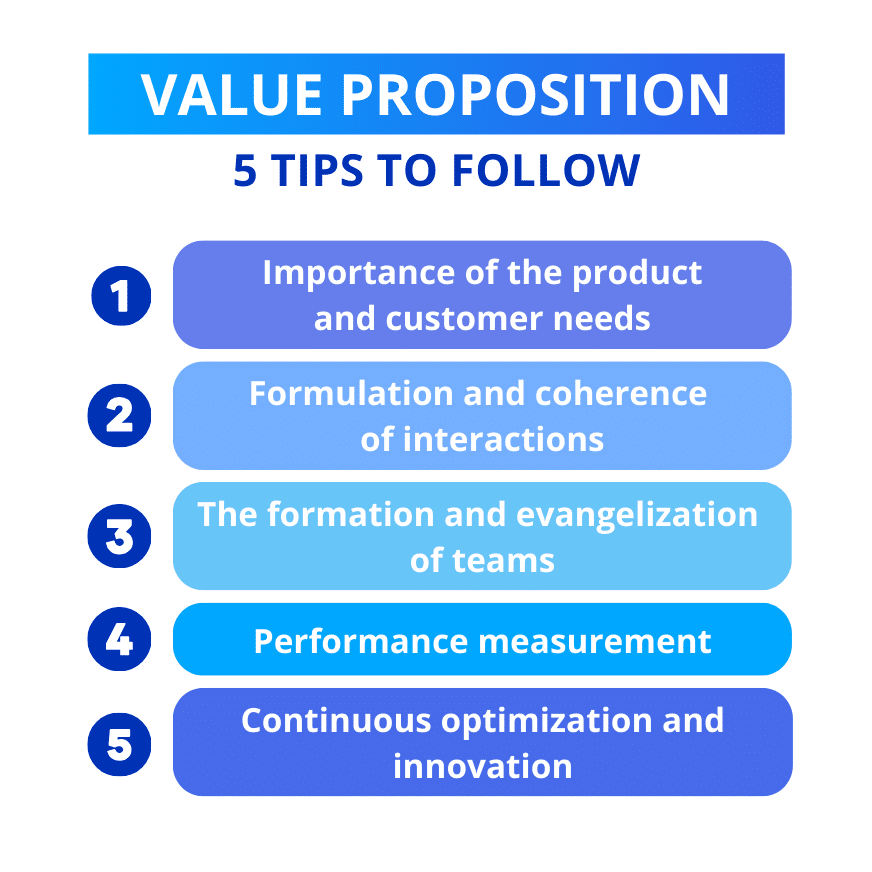
1. Importance Of Product & Customer Needs
These are really the two most important elements of your value proposition 💎 :
- ❤️ Your product or service must be at the heart of your proposition (product marketing). If it isn’t, your offer runs the risk of not being perceived as essential by your customers. This is the law of supply and demand.
- ⌛️💸 You need to invest time and resources in deeply understanding your customers’ needs, pain points and aspirations (and too much is better than too little) in order to formulate a proposition that really resonates with them and addresses their problems and desires in a unique way. This is also known as product market fit.
2. Formulation & Consistency Of Interactions
↔️ These are two elements that work together, as the coherence of the interactions will depend on the formulation. 💬
The wording of your value proposition must be clear, concise, understandable, accessible and powerful… ☄️ There should be no doubt, so choose your words carefully. 🌟
👉🏼 You can use recognized writing frameworks and SEO to identify related trend terms.
👉🏼 Your proposal should be anything but “boring” or “clichéd”, to quickly capture attention and convince customers.
🚨 Every interaction with your customers must reflect and reinforce the promise of your unique value proposition (hence the importance of careful wording).
Make sure selling points and touchpoints (website, sales calls, marketing materials…) demonstrate the value you offer and maintain a consistent, satisfying customer experience. 📲
In short, the value proposition marks the beginning of transparent communication, which guarantees greater buy-in (internally and externally). 👇🏼
3. Training & Evangelization
We can’t say it enough: train and educate your in-house teams! 🫂 Meaning?
🧠 Teach them to understand the concept, to understand the value of your unique value proposition, to unite them, to communicate around it, and so on.
It’s an investment that will guarantee you uniform understanding and full support from the entire organization. 🏆
Dedicated team members will then be responsible for communicating effectively and consistently with all customers. 📣
4. Measuring Performance
📊 Define relevant KPIs (Key Performance Indicators) to assess the effectiveness of your unique value proposition. 💎 For example:
- the conversion rate,
- customer retention rate,
- the customer effort score (or ces),
- customer satisfaction (or csat).
For this, we strongly recommend that you equip yourself with tools: a dashboard and/or a CRM tool to monitor and measure performance. ⚒️
5. Continuous Optimization & Innovation
You might think that a company’s value proposition is “set in stone”, so to speak. But think again 😉
⚙️ On the contrary, it must be constantly re-evaluated and optimized to maintain its relevance and your long-term competitiveness 👇🏼 :
- Stay in touch with customer value proposition feedbacks and adapt your offer to reflect market changes, marketing trends and evolving customer needs.
- Pursue innovation in your product or service to meet emerging customer needs and keep your proposition attractive and relevant in the marketplace.
- Reuse the results and resources obtained (cashflow) to reinvest them in continuous innovation.
By following these tips, you’ll be able to develop a unique, strong and differentiated value proposition that attracts and retains customers effectively, while strengthening your strategic market position. 🚀
So that you can get a better idea of what a “good” unique and strong value proposition is, we’re going to present you with a detailed case study. 💅🏼
Top 7 Value Proposition Examples
Case Study 1 : Welcome to the Jungle
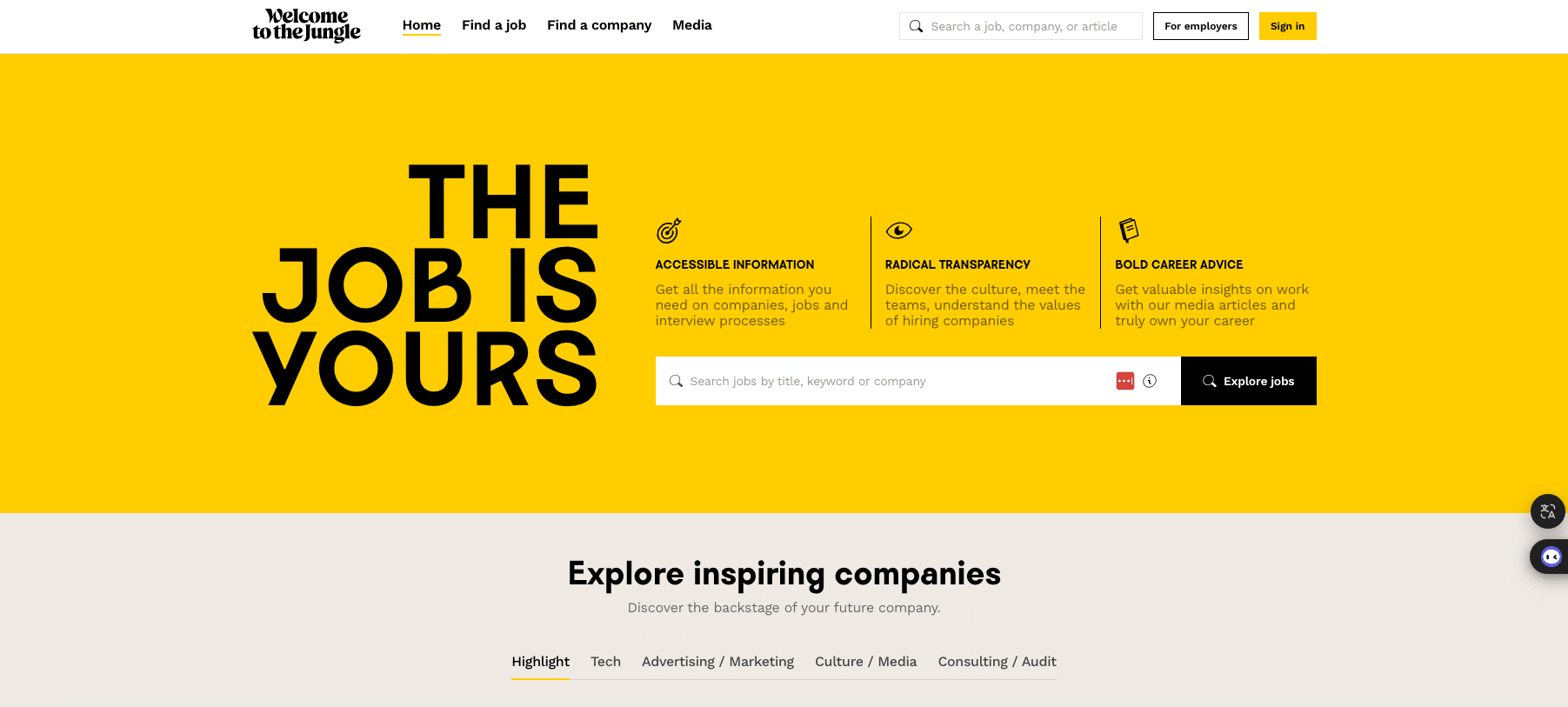
🌴 Welcome to the Jungle, founded in 2015 as a startup and innovation-focused media outlet, has evolved into a pivotal platform for recruitment and talent management. 🤝
Their teams have mastered the art of the unique value proposition 🎨 thanks to :
- 👁️ Transparency and Visibility: Enhances candidate experience by showcasing company culture and values, addressing challenges in corporate communication.
- 🧪 Innovation in Candidate Experience: Utilizes interactive tools and multimedia to inform candidates about potential employers, meeting their information needs through digital and social networks.
- 🔎 Supporting Companies: Provides innovative recruitment solutions to companies looking to recruit, addressing challenges in self-recruitment and visibility on the platform.
- ✨ Access to Innovative Companies: Connects candidates with diverse, forward-thinking firms, facilitating new professional opportunities.
✅ Their key marketing strategies include an intuitive platform, quality editorial content planning, and community building, enhancing interaction and collaboration among candidates and employers.
🏆 This value proposition has led to platform growth and influence in the recruitment industry, transforming how companies and talent engage. 🌟
Case Study 2 : Netflix
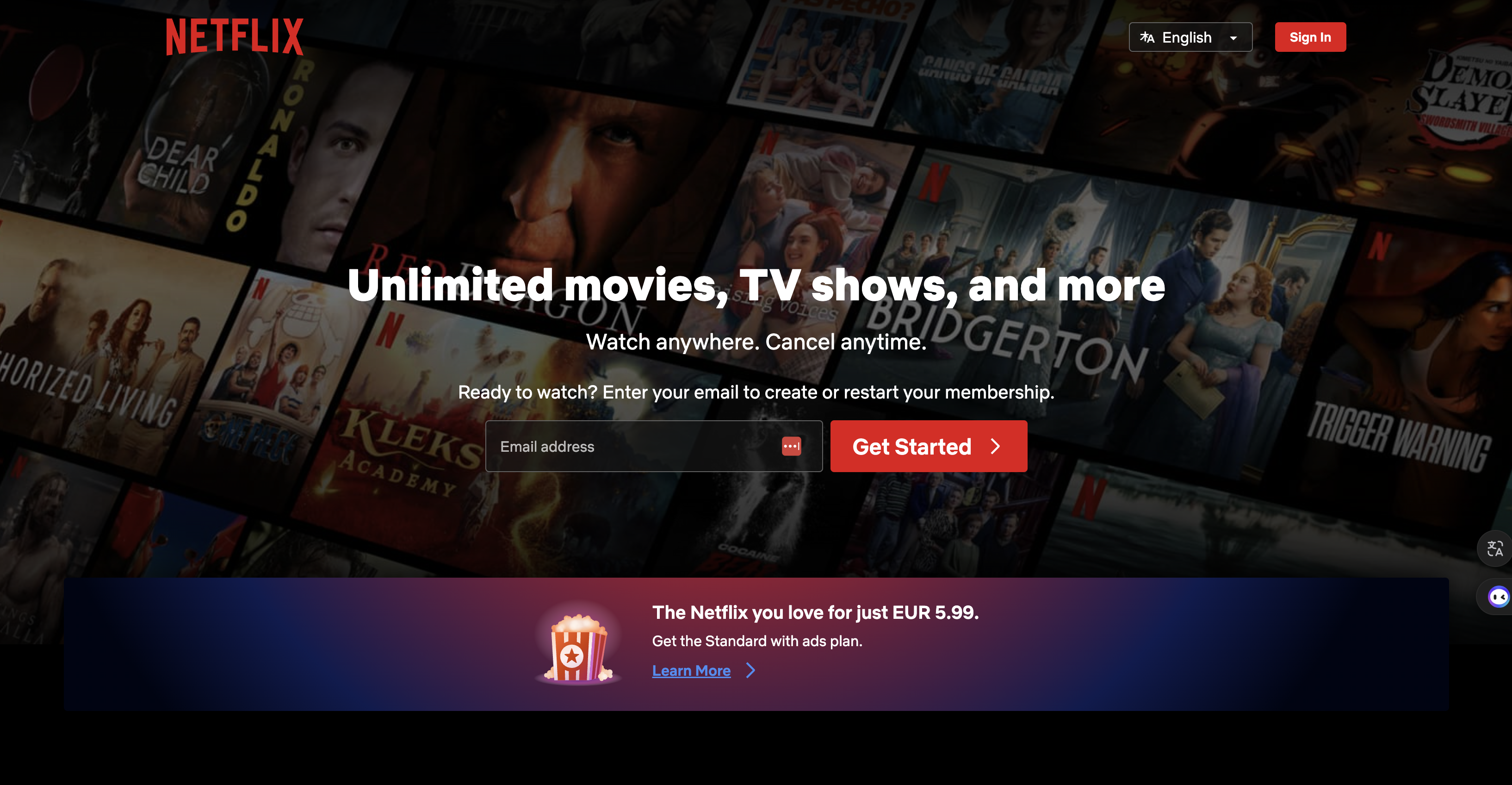
Netflix 🖥️, established in 1997, has revolutionized entertainment consumption globally by pioneering streaming media services. 🎬
🌟 Their unique value proposition encompasses:
- 📺 Extensive Content Library: Offers a vast array of movies, TV shows, and original productions, ensuring diverse entertainment options tailored to global audiences.
- 🌍 Global Accessibility: Operates in over 190 countries, adapting content to local preferences and providing seamless streaming experiences across multiple devices.
- 🎁 Personalized User Experience: Utilizes advanced algorithms to recommend content based on individual viewing history, enhancing engagement and satisfaction.
- 🧪 Technological Innovation : Continuously improves streaming technology for high-quality playback and user-friendly interfaces, integrating advanced features.
✅ His marketing strategy include actions like commitment to content diversity, personalized experiences, and technological innovation has solidified its position as a leader in the streaming industry.
🏆 Netflix’s disruptive and online value proposition has reshaped how media companies distribute and how audiences worldwide enjoy entertainment, setting new standards for online entertainment platforms and global content consumption.
Case Study 3 : Tesla
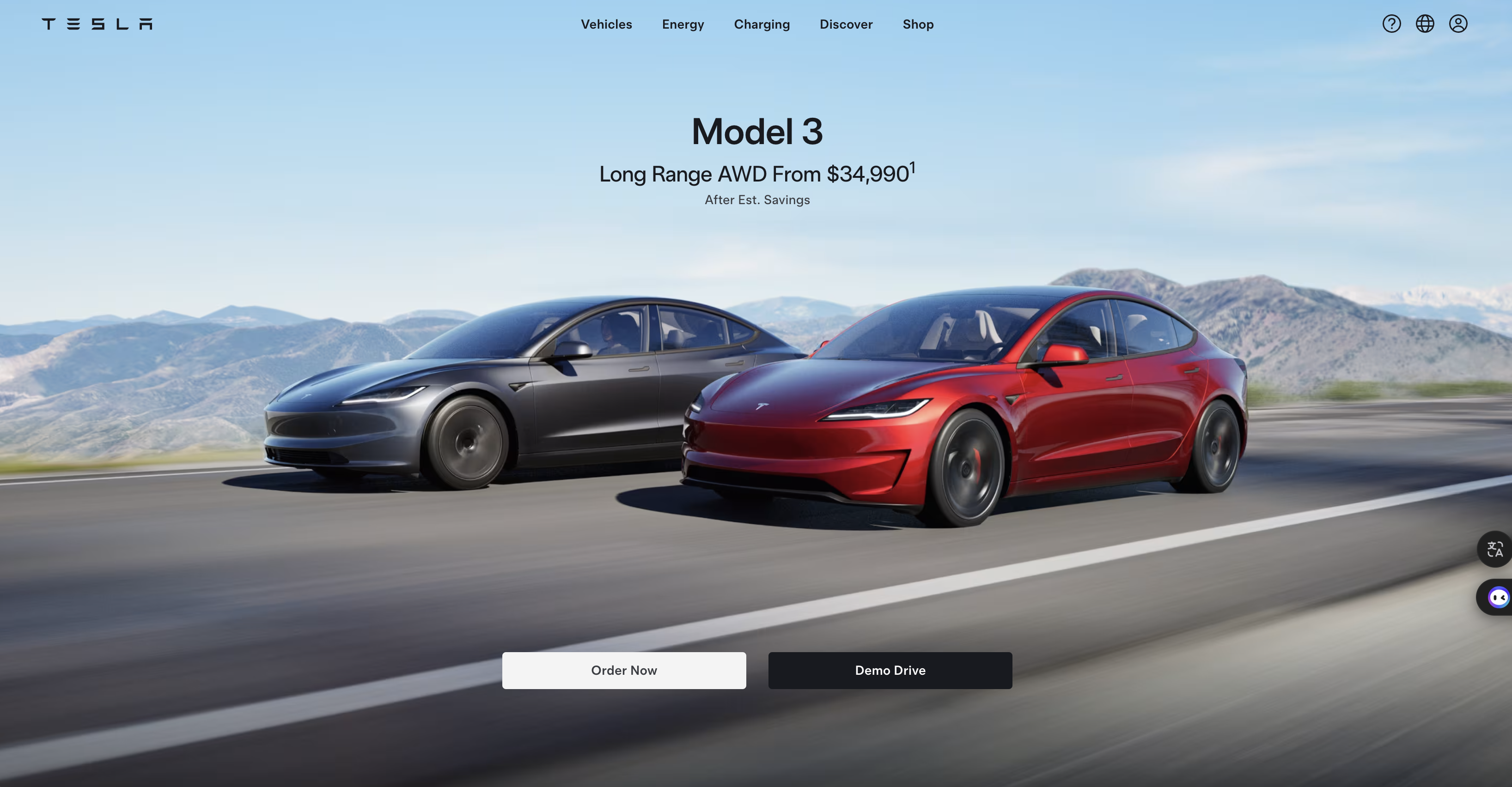
🚗 Tesla, founded in 2003, has redefined the automotive industry through its commitment to electric vehicles and sustainable energy solutions. ⚡
There are the elements of his unique value proposition 💎 :
- 🔋 Cutting-Edge Technology : Leads the market with innovative electric cars like, offering zero-emission transportation options with high-performance.
- 🌍 Sustainable Energy Solutions: Beyond cars, it promotes renewable energy (solar panels and Powerwall battery), empowering consumers to generate and store clean energy at home.
- 📱 Advanced Capabilities: Integrates state-of-the-art autonomous driving features, enhancing safety and convenience while paving the way for future mobility technologies.
- 🔧 Continuous Innovation: pushes the boundaries of automotive technology, from battery advancements to software updates that enhance vehicle performance and user experience.
✅ Tesla’s success is bolstered by its focus on sustainability, technological superiority, and direct-to-consumer sales techniques.
🏆 Tesla’s value proposition has not only accelerated the adoption of electric vehicles but also transformed consumer expectations of what a car can be, driving innovation and sustainability forward on a global scale.
Case Study 4 : Apple
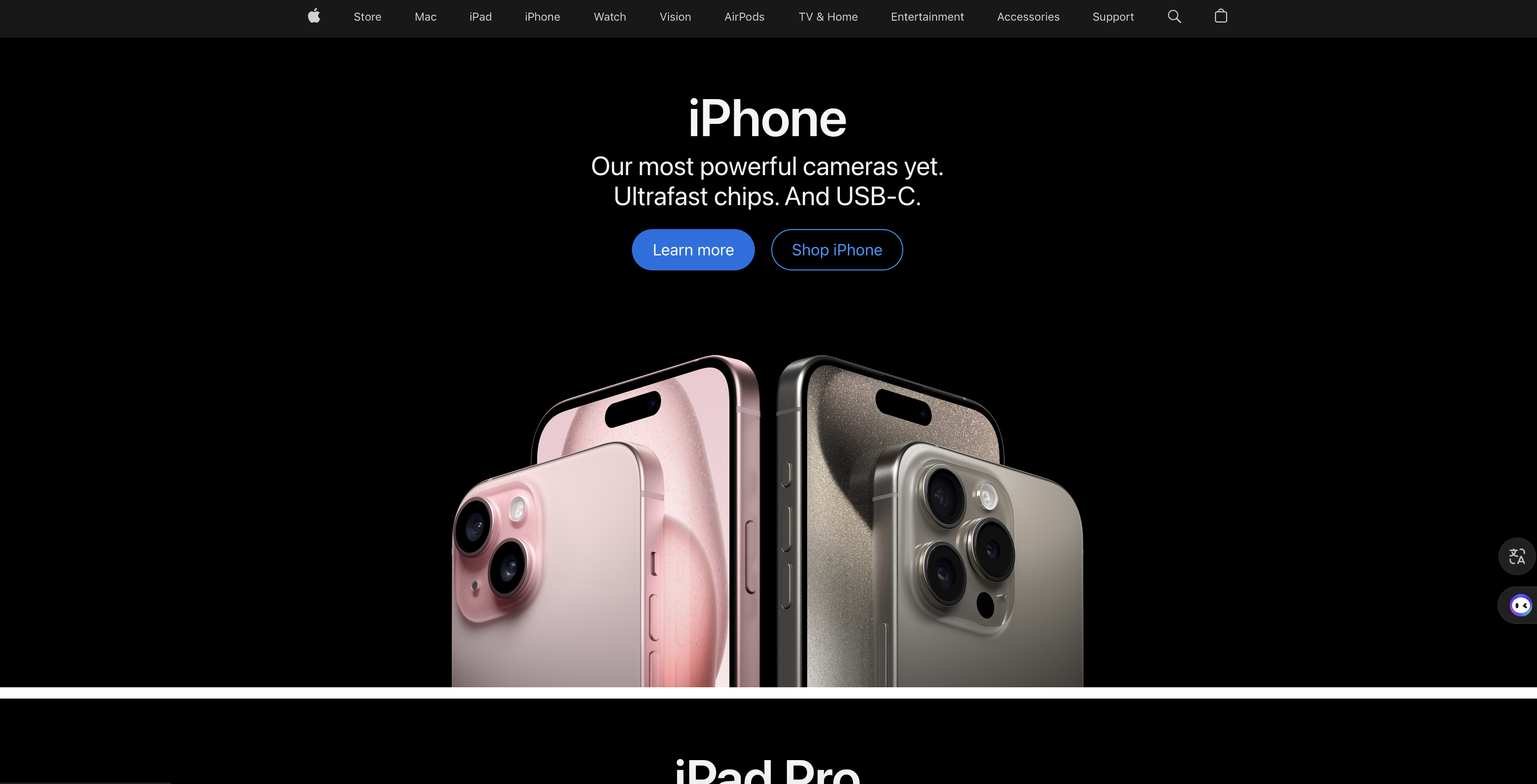
📱 Apple, founded in 1976, has revolutionized consumer electronics and technology with its iconic products and ecosystem. 🍏
Their unique value proposition concern 🚀 :
- 💻 Innovative products leading the market with the iPhone, iPad, MacBooks, and Apple Watch, renowned for their design, performance, and user experience.
- 🌍 Seamless Ecosystem: Integrates hardware, software, and services such as iCloud, Apple Music, and the App Store, offering a cohesive user experience across devices.
- 🍏 Brand Loyalty and Customer Experience: Cultivates strong customer loyalty through quality products, intuitive interfaces, and excellent customer service.
- 🔧 Interface design : Drives innovation in technology and user interface design, setting industry standards with each new product release and software update.
✅ Apple’s success is built on its commitment to innovation, premium quality, and ecosystem integration, appealing to consumers seeking reliable, user-friendly technology solutions.
🏆 Apple’s value proposition set benchmarks for product design and technological innovation globally, influencing the entire tech industry.
Case Study 5 : Amazon
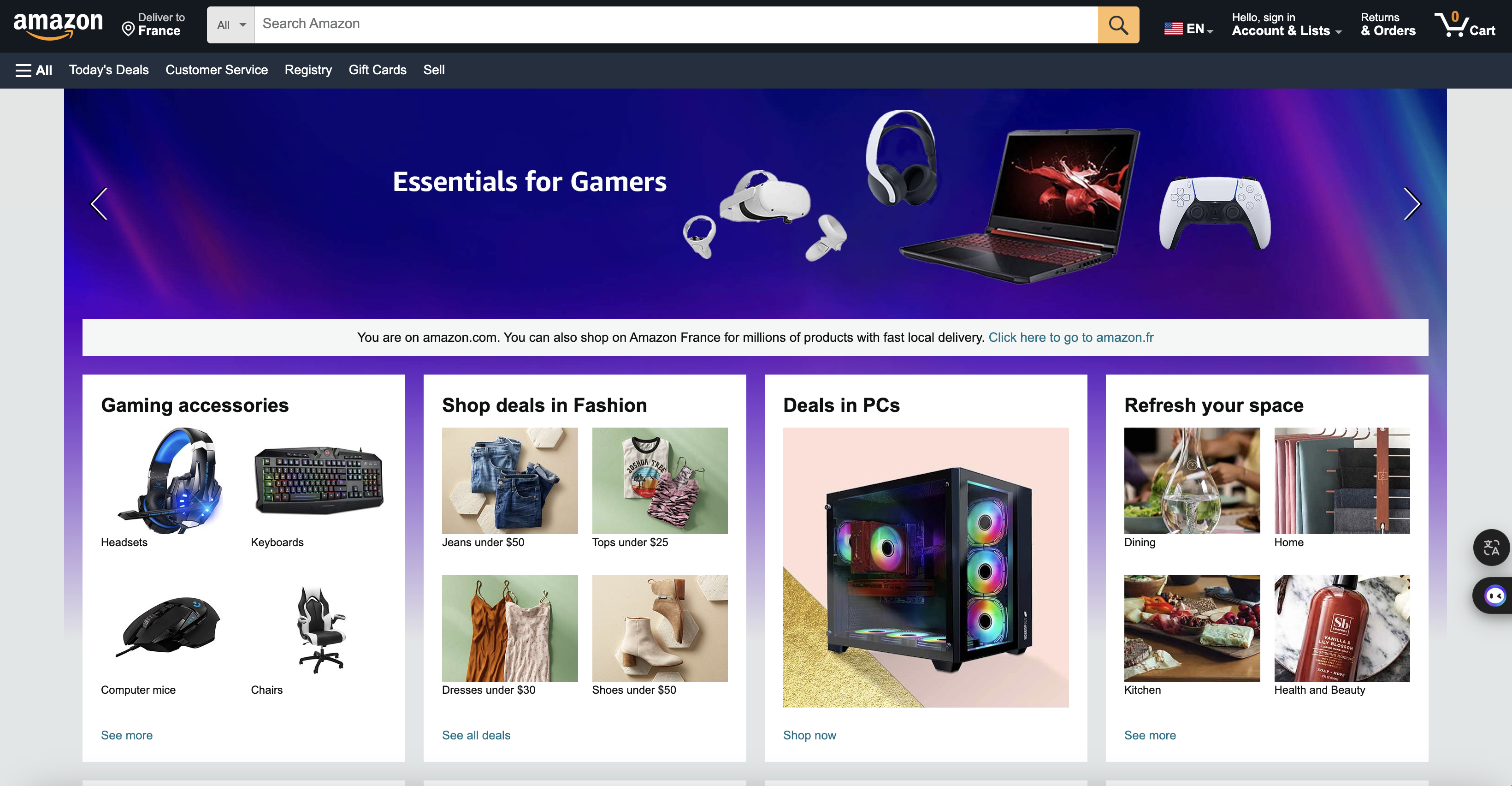
📦 Amazon, founded in 1994, has transformed e-commerce and pioneered cloud computing with its expansive range of services and global reach. 🌐
⬇️ Here are the elements of its unique value proposition:
- 🛍️ Extensive Product Selection: Offers a vast array of products across numerous categories, providing customers with unparalleled choice and convenience.
- 🚚 Efficient Logistics and Delivery: Operates a sophisticated logistics network and fulfillment centers to ensure fast and reliable delivery, enhancing customer satisfaction.
- 💻 Cloud services : Leads in cloud computing with Amazon Web Services (AWS), providing scalable and secure cloud solutions to businesses worldwide.
- 📱 Customer-Centric Approach: Prioritizes customer satisfaction through initiatives like Amazon Prime, offering benefits such as fast shipping, streaming services, and exclusive deals.
✅ Amazon’s success is founded on its commitment to innovation, customer obsession, and operational excellence (particularly in logistics and technology infrastructure), setting standards for e-commerce and cloud computing industries.
🏆 Amazon’s value proposition redefined customer expectations for convenience, choice, and reliability in digital commerce and technology solutions.
Case Study 6 : Airbnb
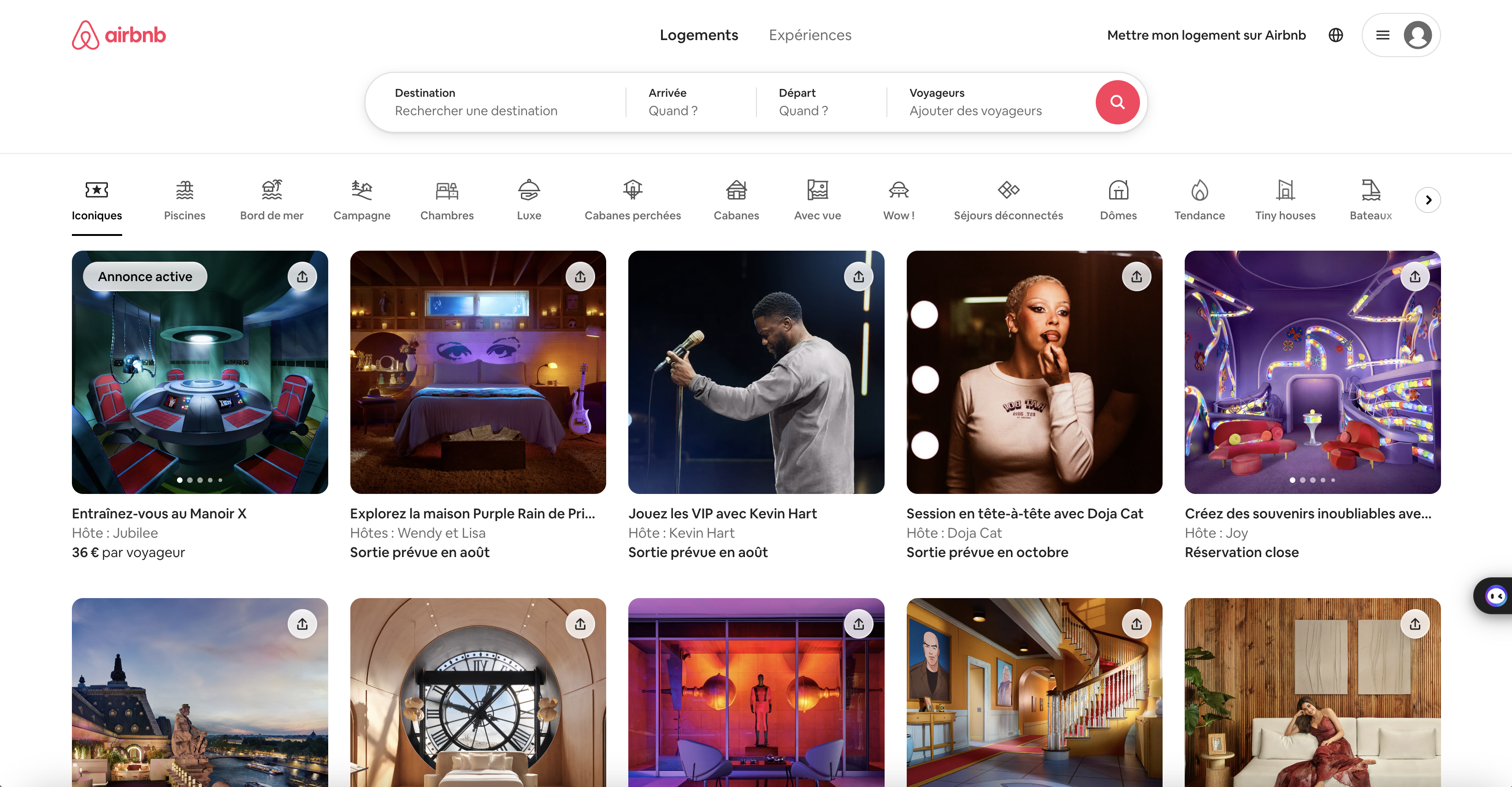
🏠 Airbnb, founded in 2008, has revolutionized the travel and hospitality industry with its innovative approach to lodging and accommodation. 🌍
There are the elements of his unique value proposition 💎 :
- 🛏️ Accommodation Options: Offers a wide range of lodging choices, catering to varied traveler preferences and budgets. But also to immerse themselves in local cultures, enhancing their travel experiences.
- 🌍 Global Accessibility: Operates in over 220 countries and regions, allowing travelers to find accommodations worldwide, adapted to local preferences and needs.
- 📱 User-Friendly Platform: Features a seamless booking process and intuitive interface, enabling hosts to list properties easily and travelers to find suitable accommodations effortlessly.
- 🔧 Trust and Safety: Implements rigorous safety standards and verification processes for hosts and guests, ensuring a secure and reliable booking experience.
✅ Airbnb’s success is built on its commitment to providing unique travel experiences, fostering community engagement, and promoting cultural exchange globally.
🏆 This value proposition for traditional hospitality industry but also empowered travelers to explore destinations in a more authentic and personalized manner, redefining the way people travel and experience new places.
Case Study 7 : Waalaxy
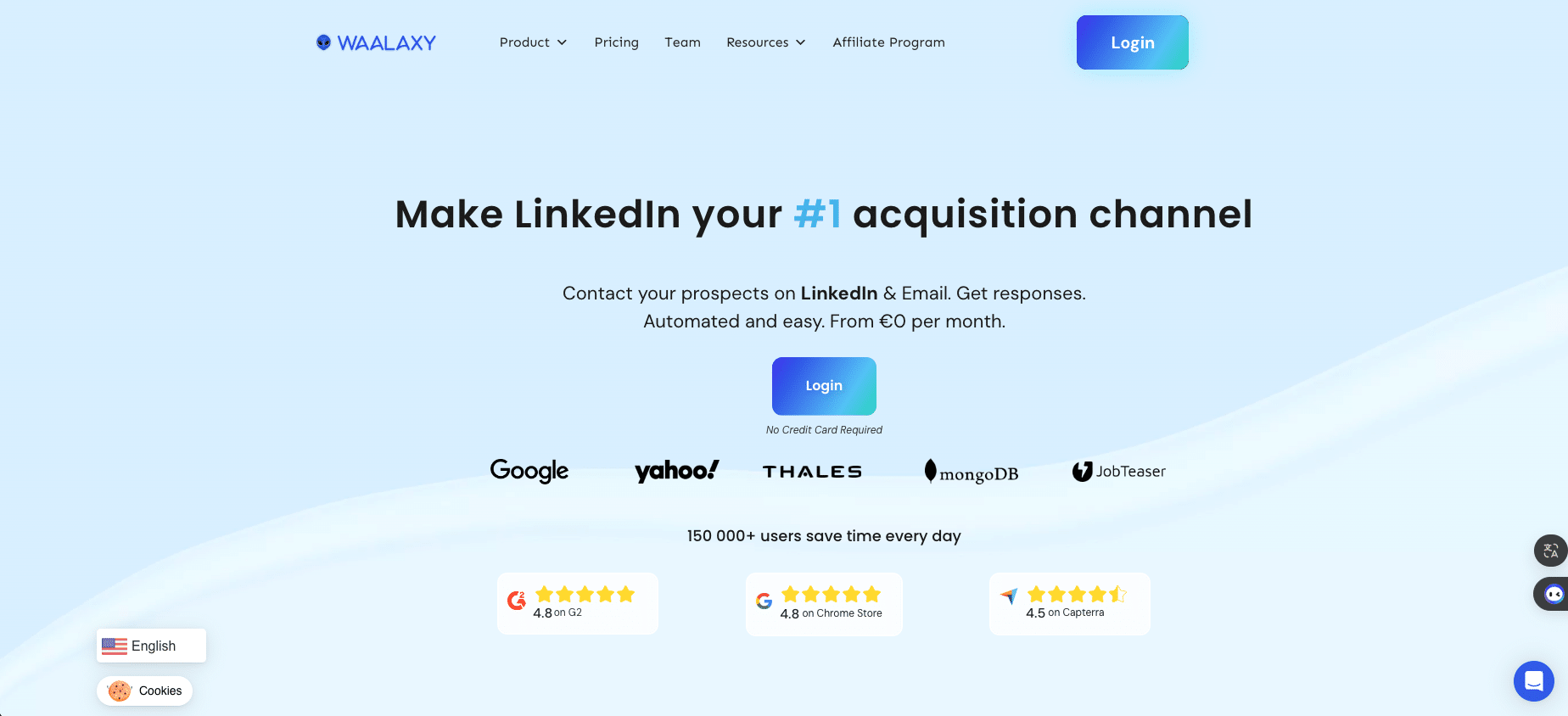
👽 Waalaxy, formerly named ProspesctIn, was founded in 2018 to revolutionize the world of commercial prospecting through marketing automation.
🌟 Their unique value proposition encompasses:
- 👌🏼 Ease of use : Simplest platform on the market, everything is done so that the tool is visually consistent and accessible to everyone, not just statistics and prospecting experts! 😇
- 📲 Multichannel campaigns : Operates in over 220 countries and regions, allowing travelers to find accommodations worldwide, adapted to local preferences and needs.
- 🤝 User support and quality of the multiple resources available to users : provides an impressive diversity of content in 11 languages (News, FAQ, Support Chat, Help Center, Newsletters, Media and presence on social networks, blog, webinars, E-book,…).
- 🔒 Safety : Implements rigorous safety standards for preserving LinkedIn account, since the system monitors the activity and prevents the administrator.
✅ The success of Waalaxy is undoubtedly built on its intuitive & simple interface, its variety of features to automate quickly and support users.
🏆 His value proposition shattered the certainties of his competitors, focused so far on the complexity and number of “sharp” features offered. And, offered the possibility to thousands of novice people to access the automation of their prospects and lead generation, without worries.
Conclusion
The value proposition represents the very essence of your business model ⛽️, defining what makes a product or service indispensable and different from the alternatives and competition on the market.
By focusing on customer needs, constant innovation and clear communication, an effective value prop can transform a company into an industry leader (as we saw with Welcome to the Jungle). 🚀
🏗️ To do this, you’ll need to build a strong value and selling proposition by deeply understanding customer expectations and pain points, integrating unique benefits and maintaining flexibility to respond to market changes. 📈
Finally, the unique value proposition must not be static; it must be constantly evaluated, tested and improved to remain relevant and competitive. 🏆
👉🏼 Only then can you not only attract new customers, but also retain existing ones, ensuring sustainable growth and a solid position. 🦾
Frequently Asked Questions (FAQ)
🏁 To conclude, here are the answers to the most frequently asked questions on the subject. 👇🏼
Value Proposition VS Added Value, what’s the difference?
The difference between value proposition and added value lies in their focus and purpose in the business context.
The value proposition focuses on the customer’s perception of your product or service and what it offers, compared with those of your competitors.
Added value, on the other hand, refers to the additional benefits or tangible advantages a customer obtains by choosing your product or service over an alternative (i.e. another type of product meeting the same need) in terms of :
- Additional features,
- Exceptional customer service,
- Or reduced overall cost.
What Happens If The Value Proposition Fails?
If the unique value proposition fails, several consequences can occur:
- First of all, there’s the risk of losing competitiveness in the market, as it fails to stand out from the competition.
- This will lead to lower sales and market share. A failed proposal can also lead to customer dissatisfaction, loss of trust and a tarnished reputation.
- Finally, it can also negatively affect internal motivation and team cohesion, as objectives and expected results are not achieved.
It is therefore essential to constantly monitor and adapt the value prop to ensure its effectiveness and relevance in the marketplace.
What Is A Value Proposition Generator & How Does It Work?
A value proposition generator is a tool used to facilitate the creation and optimization of the value proposition, by clearly formulating what is proposed and why it should be attractive to target customers.
These tools can include questionnaires, predefined templates, copywriting methods, brainstorming methodologies, or analytical frameworks… Here are a few tools: Hix.ai, StartupNow.co, Asana, FourWeekNBA, FounderPAL…
They generally guide users through a structured process to identify the distinctive features of their offer, in relation to customers.
That’s it, you’re ready to build a unique, reinforced-concrete value proposition that will guarantee lasting success.🏆 See you soon! 👽









